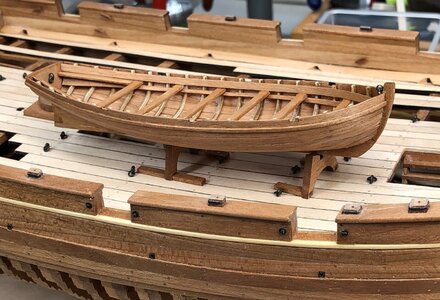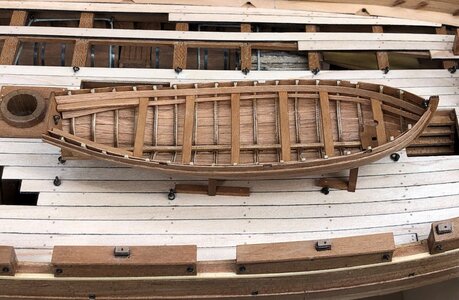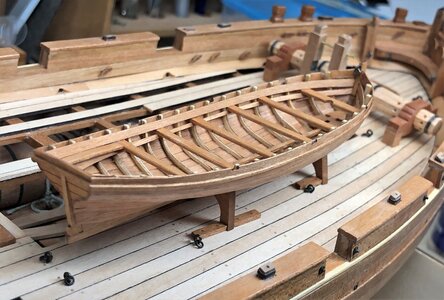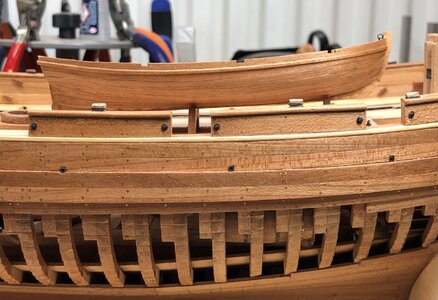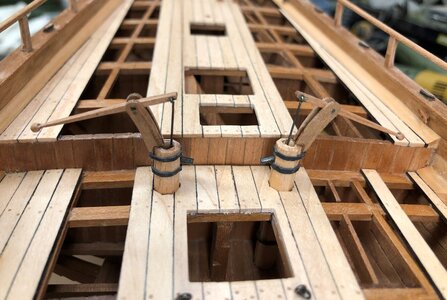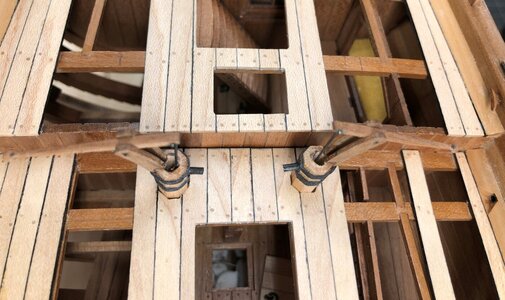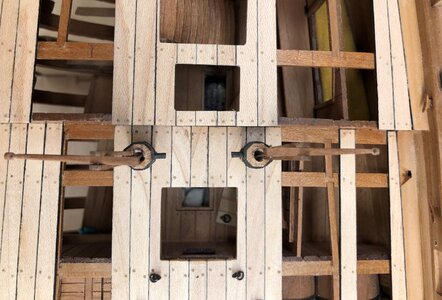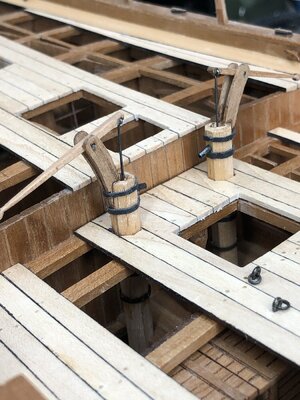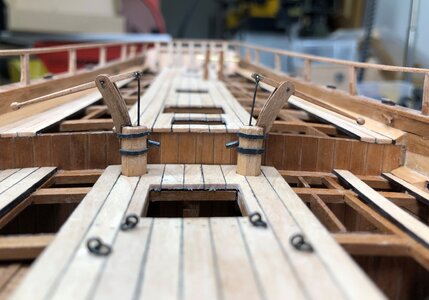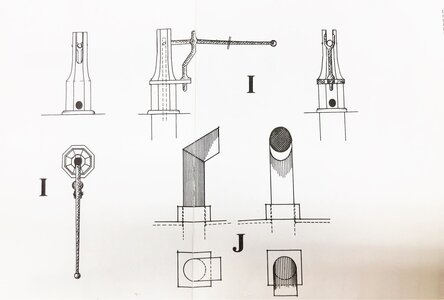Why look for mistakes? I have to admit very accurate planking (no glue on the frames inside the planks) Bravo!
-

Win a Free Custom Engraved Brass Coin!!!
As a way to introduce our brass coins to the community, we will raffle off a free coin during the month of August. Follow link ABOVE for instructions for entering.
-

PRE-ORDER SHIPS IN SCALE TODAY!
The beloved Ships in Scale Magazine is back and charting a new course for 2026!
Discover new skills, new techniques, and new inspirations in every issue.
NOTE THAT OUR FIRST ISSUE WILL BE JAN/FEB 2026
- Home
- Forums
- Ships of Scale Group Builds and Projects
- Le Coureur 1776 1:48 PoF Group Build
- Le Coureur 1776 1:48 Group Build Logs
You are using an out of date browser. It may not display this or other websites correctly.
You should upgrade or use an alternative browser.
You should upgrade or use an alternative browser.
LE COUREUR - french Lugger 1776 - POF kit from CAF in 1:48 by Uwe
This looks exceptionally good. It looks elegant and coherent. Bravo Uwe.
Some time ago, we were already discussing the hooks for the gun tackling
The Jean Boudriot drawings are showing these hooks, for each gun two of them
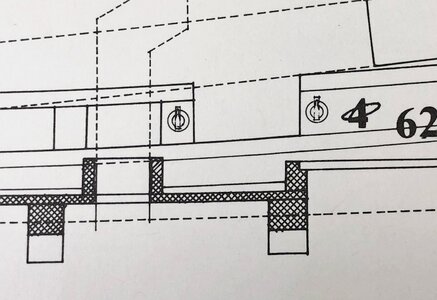
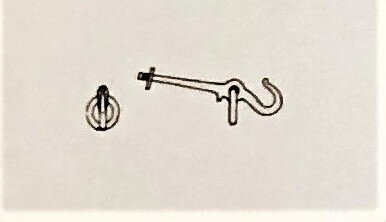
I was experimenting with several solutions until I got the hint with @Giampy65 solution on his Amarante
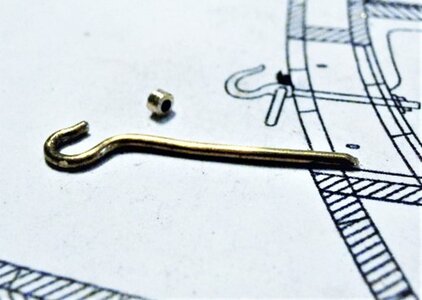
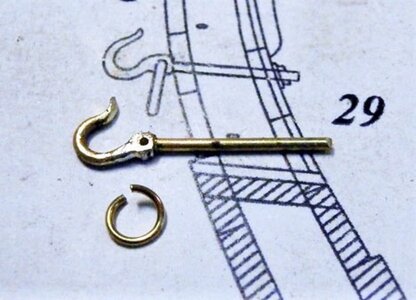
So using as much as possible the kit content I experimented with the brass casted hooks of the kit
on the lower part left side you see 3 original kit hooks, on the top 4 sanded and cleaned hooks with some small pieces of a brass tube, and on the right 4 hooks with the rings
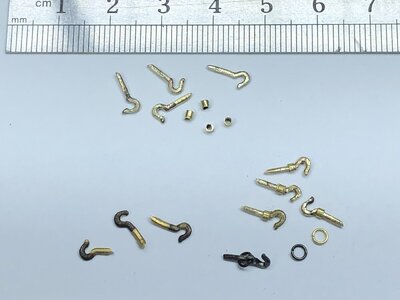
some soldering later (I ams till not very good in soldering .....) the 16 hooks with the drilled holes for the rings
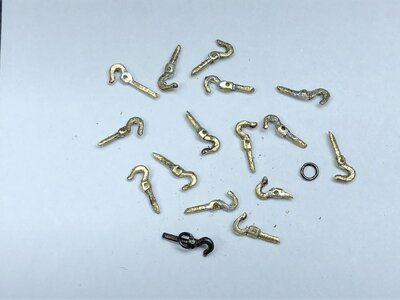
here a close up of my first trial - the result was not so bad ....
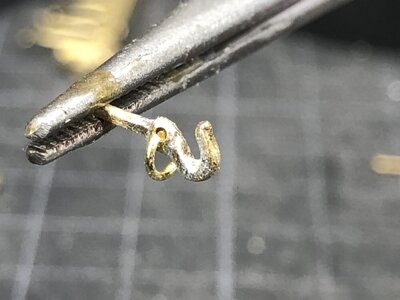
blackened elements
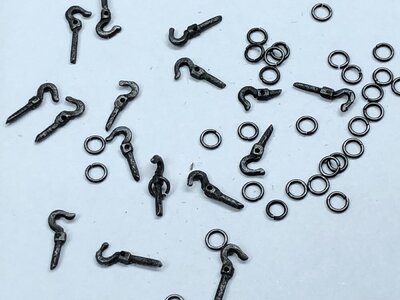
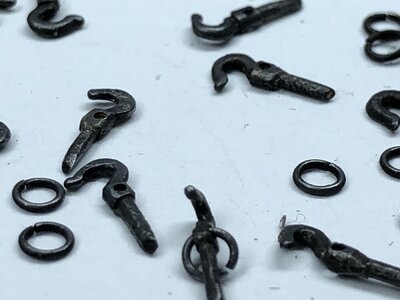
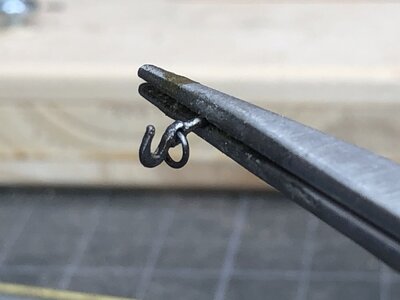
all 16 hooks prepared for the later installation with the gun tackles
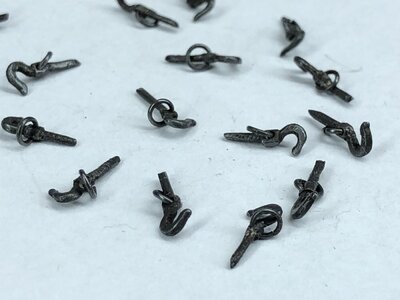
not fixed - only to get a feeling of how they will look like
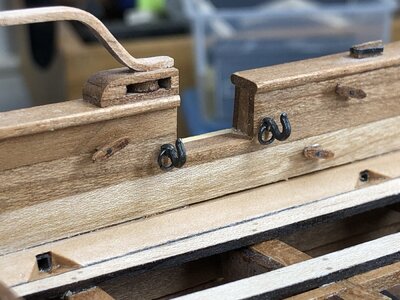
LE COUREUR - french Lugger 1776 - POF kit from CAF in 1:48 by Uwe
Let us take first a look at the Jean Boudriot drawing of this detail available in the Le REQUIN monograph https://shipsofscale.com/sosforums/threads/le-requin-xebec-1750-scale-1-48-by-jean-boudriot-hubert-berti.2173/ There shown three of these iron supports and now as agreed with Rüdiger...
shipsofscale.com
The Jean Boudriot drawings are showing these hooks, for each gun two of them


I was experimenting with several solutions until I got the hint with @Giampy65 solution on his Amarante


So using as much as possible the kit content I experimented with the brass casted hooks of the kit
on the lower part left side you see 3 original kit hooks, on the top 4 sanded and cleaned hooks with some small pieces of a brass tube, and on the right 4 hooks with the rings

some soldering later (I ams till not very good in soldering .....) the 16 hooks with the drilled holes for the rings

here a close up of my first trial - the result was not so bad ....

blackened elements



all 16 hooks prepared for the later installation with the gun tackles

not fixed - only to get a feeling of how they will look like

Wow, very impressiv, fine work.
They are scratch-built by yourself! You should be really proud of the output.
Last edited:
- Joined
- Apr 20, 2020
- Messages
- 6,205
- Points
- 738

wowSome time ago, we were already discussing the hooks for the gun tackling
LE COUREUR - french Lugger 1776 - POF kit from CAF in 1:48 by Uwe
Let us take first a look at the Jean Boudriot drawing of this detail available in the Le REQUIN monograph https://shipsofscale.com/sosforums/threads/le-requin-xebec-1750-scale-1-48-by-jean-boudriot-hubert-berti.2173/ There shown three of these iron supports and now as agreed with Rüdiger...shipsofscale.com
The Jean Boudriot drawings are showing these hooks, for each gun two of them
View attachment 266807 View attachment 266806
I was experimenting with several solutions until I got the hint with @Giampy65 solution on his Amarante
View attachment 266809 View attachment 266810
So using as much as possible the kit content I experimented with the brass casted hooks of the kit
on the lower part left side you see 3 original kit hooks, on the top 4 sanded and cleaned hooks with some small pieces of a brass tube, and on the right 4 hooks with the rings
View attachment 266813
some soldering later (I ams till not very good in soldering .....) the 16 hooks with the drilled holes for the rings
View attachment 266814
here a close up of my first trial - the result was not so bad ....
View attachment 266811
blackened elements
View attachment 266815
View attachment 266816
View attachment 266812
all 16 hooks prepared for the later installation with the gun tackles
View attachment 266817
not fixed - only to get a feeling of how they will look like
View attachment 266818

it's looks wonderful result & very accurate
Wonderfully made hooks, perfectly implemented.
Uwe, the hooks are great. And after blackening, as if forged. Great job 





Your hooks and rings look great Uwe, thanks for showing the "how to" photo sequence.
Hallo my friend,Looking good. Interesting arrangement - pipes point inboard, never seen it before.
somehow I expected such a comment by somebody - and I am prepared and would like to explain my thoughts.
First of all the elmtree-pumps of the kit are slightly different to the types which are shown in Boudriots Le Coureur monograph, but the principles are the same and the size and situation (location and arrangement on the deck) are the same
My thoughts when I prepared and installed the outlets of the pump where this:
1) The width of the deck is too small - therefore definitely the handle of the pump(s) have to be oriented towards the railing. (red arrow)
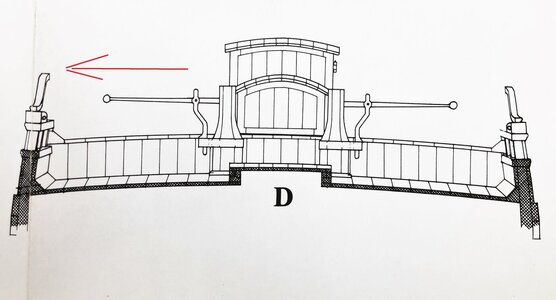
2) On such elmtree-pumps the outlet can be also sideway means f.e. 45° towards the handle
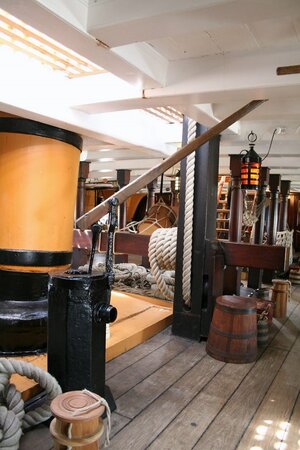
but 3) Because of the step in the deck (green arrows) and the directly on the other side opening with a hatch, I have my doupts, that they would spill the water towards these directions
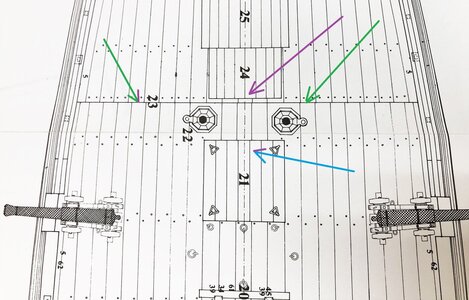
4) there are also sketches available from Goodwin or Lavery showing the outlets with direction inbord
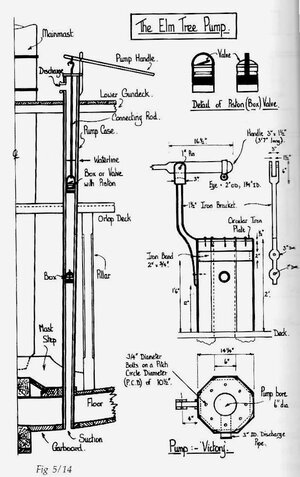
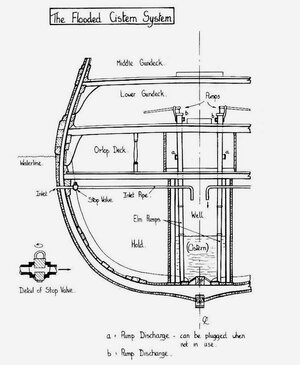
=> Based on this situation I decided to make the outlets like they are in moment -> and the seamen are happy, that they get not spilled cold water directly on their feet
=> the width of the ship is very small, so that the water will fastly disappear from the deck
=> additional info about a very interesting detail:
The scupper near the pump has a bigger square area than the normal one - so a higher capacity
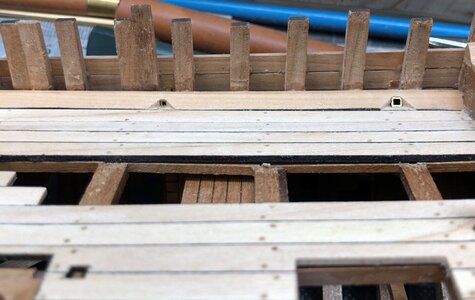
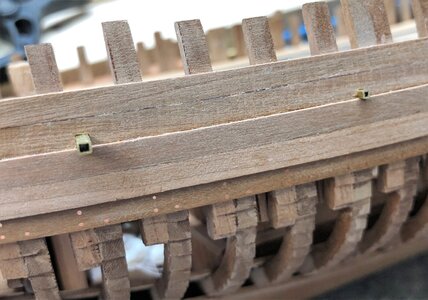
Attachments
- Joined
- Jan 9, 2020
- Messages
- 10,543
- Points
- 938

Uwe your work is magnificent and it is a most impressive build. I like the clean-look of the deck, your eyebolts and rings are to die for (just superb), the pumps are detailed and nicely executed, but the small boat puzzles me. Surely there must be a cap railing? How else are the oar locks secured? I know you mentioned that you still need to fill the inside, but surely the cap rail does not count as part of that?...
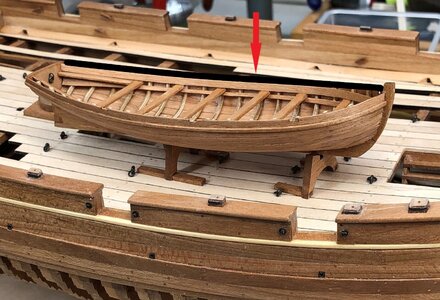

Ah! The step in the deck explains the situation. Thanks.Hallo my friend,
somehow I expected such a comment by somebody - and I am prepared and would like to explain my thoughts.
First of all the elmtree-pumps of the kit are slightly different to the types which are shown in Boudriots Le Coureur monograph, but the principles are the same and the size and situation (location and arrangement on the deck) are the same
My thoughts when I prepared and installed the outlets of the pump where this:
1) The width of the deck is too small - therefore definitely the handle of the pump(s) have to be oriented towards the railing. (red arrow)
View attachment 267754
2) On such elmtree-pumps the outlet can be also sideway means f.e. 45° towards the handle
View attachment 267756
but 3) Because of the step in the deck (green arrows) and the directly on the other side opening with a hatch, I have my doupts, that they would spill the water towards these directions
View attachment 267755
4) there are also sketches available from Goodwin or Lavery showing the outlets with direction inbord
View attachment 267757 View attachment 267758
=> Based on this situation I decided to make the outlets like they are in moment -> and the seamen are happy, that they get not spilled cold water directly on their feet
=> the width of the ship is very small, so that the water will fastly disappear from the deck
=> additional info about a very interesting detail:
The scupper near the pump has a bigger square area than the normal one - so a higher capacity
View attachment 267759 View attachment 267760
I hope Uwe doesn't mind jumping for the answer, though he might object or add additional information available on his hand.Uwe your work is magnificent and it is a most impressive build. I like the clean-look of the deck, your eyebolts and rings are to die for (just superb), the pumps are detailed and nicely executed, but the small boat puzzles me. Surely there must be a cap railing? How else are the oar locks secured? I know you mentioned that you still need to fill the inside, but surely the cap rail does not count as part of that?...
let's begin with a little bit of history.
In the age of sail, a ship carried a variety of boats of various sizes and for different purposes.
In the navies, they were:
- the launch, or long-boat, the largest of all rowboats on board, which was of full, flat, and high built
- the barge, the next in size, which was employed for carrying commanding officers, with ten or twelve oars
- the pinnace, which was used for transporting subordinate officers, with six or eight oars
- the yawl, a smaller pinnace
- the cutter, which was shorter and broader than the long-boat and used for the transfer of goods
- the jolly-boat, used for light work
- the gig, a long narrow boat, employed for expeditious rowing and fitted with sails, and belonging to the captain
A merchant ship usually carried on board
- the launch or long-boat
- the skiff, the next in size and used for towing or kedging
- the jolly-boat or yawl, the third in size
- the quarter-boat, which was longer than the jolly-boat and named thus because it was hung on davits at a ship's quarter
- the captain’s gig, which was one of the quarter boats
Cutters as ship's boats came into use in the late 17th and early 18th centuries. These were mostly clinker-built open boats that were fitted for propulsion by both oar and sail. They were more optimized for sailing than the barges and pinnaces that were types of ship's boats widely used to transport. The one distinctive resulting feature of this was the wash strake added to increase the freeboard. It was pierced with rowlock cut-outs for the oars so that the thwarts did not need to be set unusually high to achieve the right geometry for efficient use.
Please check out the drawings of the 18th foot cutter (from Alert 1777). The #7 represents the wash strake, and #6 is the pierced rowlock cut-outs for the oars.
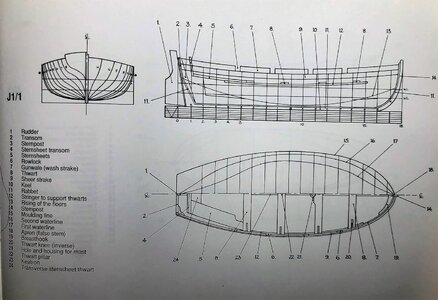
Not all the ship's boats will require cap railings. There are different types\ways to secure rowlocks.
I believe those other two boats are 'launch' and 'barge' if I am not mistaken. Besides the 'cutter' is not pretty the wash strake has a special purpose - to increase the freeboard.I was looking at the other two longboat models from CAF which both have cap railings and look "finished".

